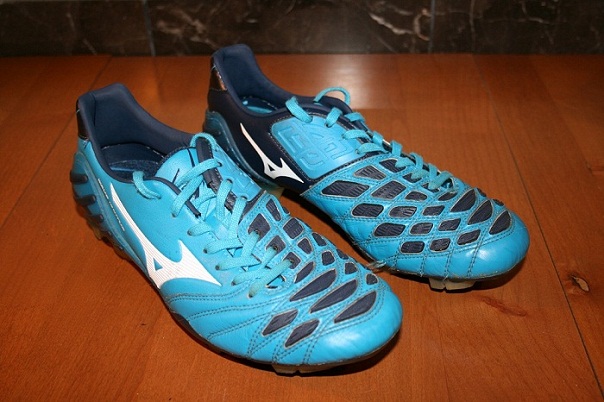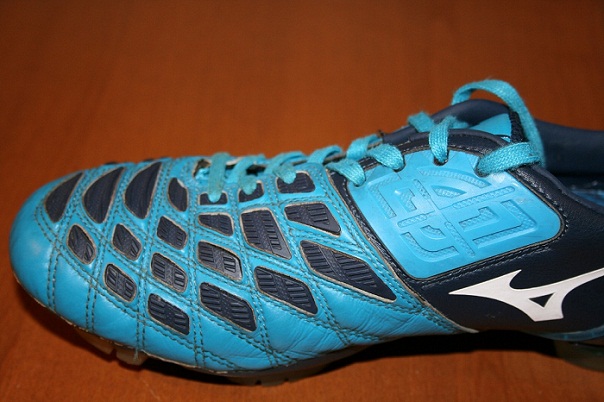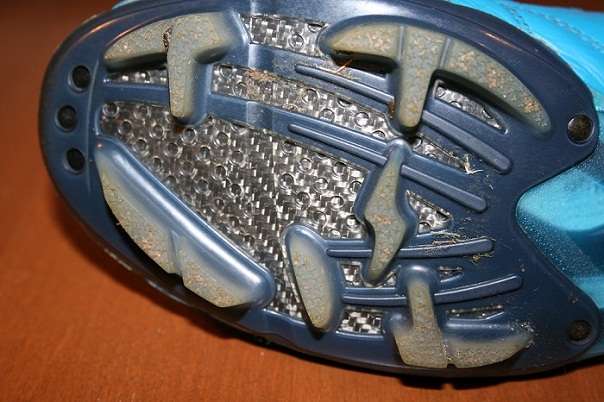Mizuno Wave Ignitus 2 Review
After a surprising showcase in the 2010 World Cup with an outstanding free kick by Keisuke Honda of Japan (he was wearing the original Wave Ignitus), Mizuno has become one of the rising companies in the world of football. The Wave Ignitus was released with a new concept that no other company had attempted to tackle: the ability to create a technology that would lessen ball spin to perform a no-spin shot. Not much has changed from the original release, but there weren’t many problems to actually fix.
Comfort and Fit
One of the categories that I felt the Wave Ignitus 2 really excelled in is the comfort. They are equipped with a very nice mesh, padded tongue that sits on top of your foot like a pillow. The main difference in the tongue from these to the original Wave Ignitus is the thickness of it. While it is still padded, it is definitely a lot thinner than the first generation. To go along with the tongue, you get a very soft synthetic heel liner, but it is not a material that I can exactly describe. It is very smooth and allows no slippage in the heel.
Right when you pull them out of the box and try them on, they will feel extremely tight. After a few minutes of having them on my feet, I was definitely worried that they would not fit me. But since they are a kangaroo leather boot I decided to stick with the size, as I was pretty sure they would stretch some. Luckily, that is just the case. After a few minutes of wear, they will create a very comfortable fit around your feet, as the leather loosens up just the right amount. Even though they do fit really tight to start out with, I would order your regular size because the leather stretches.
Also something to point out is how well the soleplate and the shape of the boot fit. Unlike many cleats, the soleplate of this shoe is contoured to the shape of your foot and actually has arch support, opposed to the almost flat nature of most soleplates. Instead of feeling like you are in a football boot, you get a sense of a running shoe.
Breaking In
Breaking these boots in was a blast. As a said before, the boot really only takes a few minutes of play or running to form to your foot, and they really do a good job of providing that comfortable fit. The soleplate is already pretty flexible from day one, even though it is composed of carbon fiber. Really, you will have no trouble breaking in these cleats, and I would say you could wear them straight into a game.
Does the Mukaiten Panel Actually Work?
A question that I could see many people asking and something that I was interested in when getting these boots is: Does the Mukaiten Panel really work? The answer to this is yes, but in some ways that aren’t actually that obvious. If you don’t know, this rubber pod (light blue) on your instep is supposed to help you perform a knuckling free kick. While it does add a good amount of grip, you will definitely not see yourself doing a no-spin shot for the first time just because of this boot. But, there is one thing that this panel does do so that you can improve your technique; because of the positioning of the pod, it gives you a good target to strike the ball on, so you know where to hit the ball to create that no-spin effect.
360 Bio Panels
Along with the Mukaiten Panel, the Mizuno Wave Ignitus 2 has other technologies to complement it. If you look on the upper of the boot, you will notice the smaller dark blue pods. These are called the 360 Bio Panels, and they are meant to provide grip on the ball to help with control. I found these to be somewhat effective, as they did provide a good amount of grip on the ball, no matter what weather you play in.
Performance
As this release features a kangaroo leather upper, I felt that you get a good feel on the ball which is ideal for dribbling. Also, the offset laces provide a very clean kicking surface which partners up with the Bio Panels to give a slight grip when striking. Although the upper is high performing, I found the best part of the boot to be elsewhere.
The place where I found the boot to be the highest performing lies in the soleplate. Mizuno has used a layered soleplate on this boot, with a mixture of carbon fiber and Pebax. This mixture of materials creates a very good amount of flexion through the forefoot, and makes a boot that moves with your foot very well. The stud pattern on these is also very unique, and it is definitely something no other company has come out with before. Basically, Mizuno has created a stud pattern to distribute weight more evenly, so that you do not feel any stud pressure. All of the studs are bladed, but something unique about them is that the ends of the studs taper down. This produces an ideal stud shape for turf, as they release from the ground very well.
Durability
After wearing for a good amount on artificial and natural surfaces, I can say that these boots are not going to wear down easily, and will hold up for a good amount of time. There have been almost no issues, except for minimal separation from the upper to the soleplate and some paint chipping away. After starting to separate, the upper to soleplate bond has not worsened after the initial split.
*Note that I have worn them for 4 months
All in All:
Now that I have tried Mizuno, I can say that they have very comfortable and high quality products. The Wave Ignitus 2’s biggest upside in my opinion is going to be the comfort. It features high quality kangaroo leather, and overall the boot has a very nice fit. If you are thinking of getting a pair of Mizunos, I would definitely to try to get some. The main trouble with getting a pair is the limited availability in North America, but you can still pick them up from sites such as ProDirect.
Performance: 8/10
Comfort: 9/10
Durability: 9/10
Technology: 8/10
Value: 8/10
Breaking In Period: Short
Feet Width it Can Fit: Narrow-Medium




